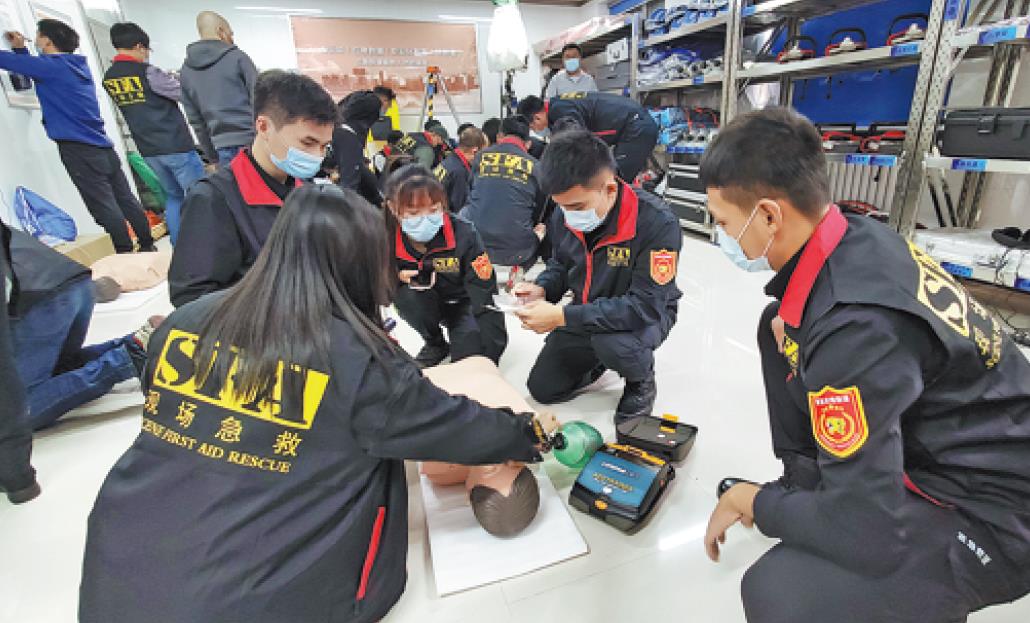Life-saving devices come to the rescue


More machines deployed in key areas
It takes just four minutes for brain cells to be permanently damaged due to a severe lack of oxygen in cases of sudden cardiac arrest where professional help is not immediately available.
If medical workers do not arrive at the scene of such emergencies within 10 minutes, the chances of a victim surviving are minimal.
In September, a 45-year-old man fell unconscious at Huoying station on Line 13 of the Beijing Subway. He died later in the hospital, despite attempts by two passengers to revive him by using cardiopulmonary resuscitation, or CPR.
However, if an automated external defibrillator, or AED, had been available at the scene, the man's chances of survival would have been greatly improved.
An AED can recognize an abnormal heart rhythm and quickly correct it through an electric shock.
The devices are viewed in medical circles as a more efficient and effective method of saving lives in emergencies than using CPR. After a brief training period, people with no medical knowledge can master the basic skills needed to use an AED.
In May last year, a student at Tsinghua University in Beijing fainted in a dormitory after experiencing head sweats. His hands also involuntarily formed fists. Several students began to perform CPR, artificial respiration and also used a newly installed AED to help the stricken freshman.
After two electric shocks were administered, the student's heart beat was restored and he was sent to the hospital for further treatment.
An emergency doctor from the hospital who attended the scene said it was highly likely the student would have died had not a series of the correct first aid measures been applied, along with the AED.
In 2010, a study published in the Journal of the American College of Cardiology said the availability of an AED in a community nearly doubles the chances of survival in cases of out-of-hospital cardiac arrest.
The research, which focused on assessing the effectiveness of AED use, found that some 38 percent of people who experienced cardiac arrest could survive if they received an electric shock from an AED before the arrival of an emergency medical team.
Pei Zheng, a staff member from Tsinghua University's Policy Research Office, said it was "really cool" that AEDs were available at the institution, as the incident involving the freshman occurred just two months after they were installed.
"It's so good that we have these life-saving machines on campus, otherwise we would have heard tragic news," she said.
In March last year, the university received a donation of 341 AEDs from alumnus Xu Hangyu. The devices have been installed around the campus in stages.
It is the first educational institution in China to promote the Public Electric Defibrillation Program, which aims to safeguard students' health by providing such devices.
- Arab League delegation visits China-Arab Research Center on Reform and Development for 10th anniversary
- Shanghai Jiao Tong University launches Center for Studies of Global South Sustainable Development
- Ex-CNNC general manager faces disciplinary probe
- China launches long march 12 rocket, deploys satellites for expanding space network
- Global gathering transforms Yixing village into youth hub
- China's prosecutors intensify crackdown on crime, charge 1.27 million in first 11 months of 2025





































